Average Birding

A Surrey Circuit
COVID-19 lockdown has eased slightly. We've booked a car for two days and on the second day (a.k.a Tuesday), we venture out into Surrey to see what we can find.
Pronoun guidance: AB2 penned this entry, covering the events of June 30th, 2020.
Plan
The forecast looks mixed, but promises to brighten in the afternoon and, frankly, we're excited for a trip out in rain or shine. AB1 has a series of locations in mind in Surrey, which, if the recce proves a success, could become a circuit (is it actually a circuit? --Ed) to share with friends and fellow birders in future seasons.
Destination 1: Papercourt Meadow
After a smooth run from North London to Sam's Newark Lane Car Park, albeit with a somewhat bumpy entry to the car park itself, we don macs and backpacks and set off along the River Wey. We immediately meet a pair of Egyptian Geese and are charmed by the idyllic outlook of the canal punctuated by narrowboats going about their business.
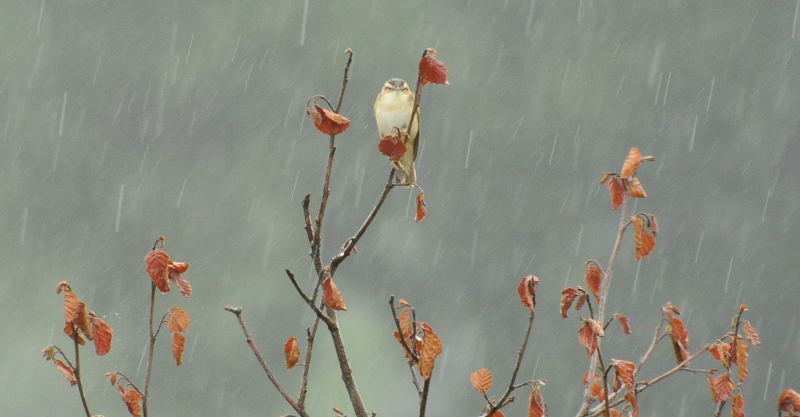
As the drizzle makes a more concerted effort at coming down, we spy a Sedge Warbler and then, closer to the lock, a swoop of Swallows doing exactly that, diving between the trees to catch insects before taking time to perch on a leafless tree, giving us an excellent view of what looks like at least two generations of birds.
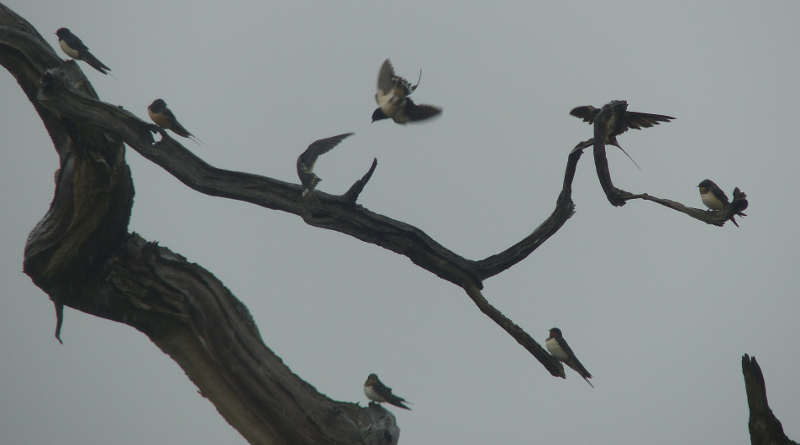
We also spot a Wren, and a Mistle Thrush family in the scrub beyond divert our attention and result in a temporary confusion about which direction to head. Following consultation of the map, we decide we need to cross the river and a short trundle later we are into the meadow.

Before long, it becomes difficult to ignore damp feet (buy better shoes! --Ed) and there's a rising feeling that this stop, while picturesque, might be a bit of a damp squib after all. However, our spirits are very quickly lifted by sightings of Dunnock and Blackbird, even through optics rendered opaque by condensation.
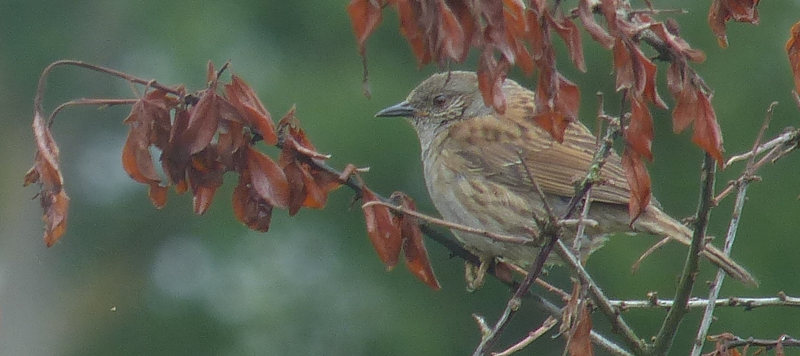
Happily, the rain eases off and there's a humidity in the air that encourages the insects back into flight and the birds follow suit shortly after. There are Whitethroat, Reed Bunting and Reed Warbler, darting between trees and chirruping in the reeds.
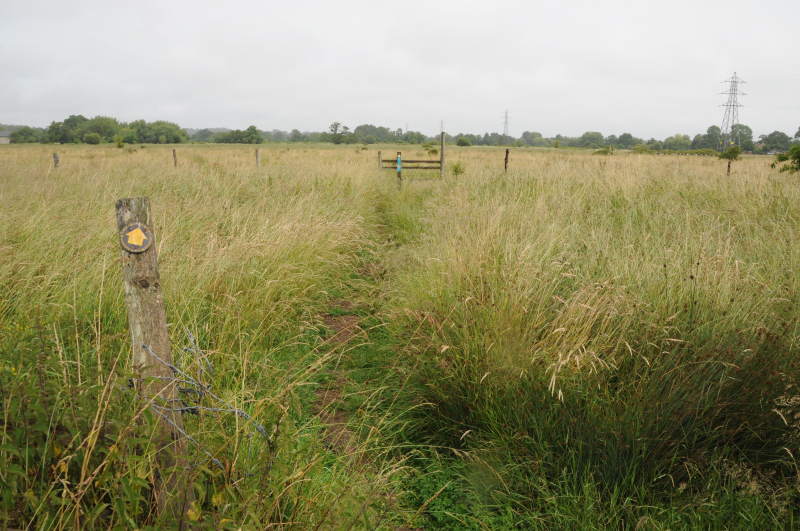
We hop over a stile, the area beyond it yields Stonechats and more Whitethroats. It quickly becomes impossible to move for birds: Song Thrush, Reed Bunting, Dunnock, Sedge Warbler again and then family trios of Stonechat mixed in with yet more Whitethroats.
With the rain now banished, we spend quite some time picking our way through the meadow, having a good look at all the birds we spy through the binoculars and taking photos of many of them, with varying degrees of success.

Truly, we could spend all day looking at and photographing every one multiple times, but there are other stops on the schedule and so we will ourselves on. We double back over the canal and follow the lane back to the car park, before setting off for Frensham Little Pond, spurred on by plans for lunch in the Tern Cafe, which the internet reports has reopened with reduced hours.
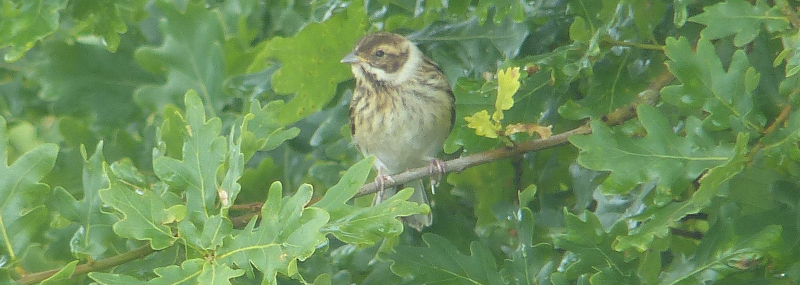
Destination 2: Frensham Little Pond
Arrival at the Tern Cafe proves internet reports are not always right; the cafe is very much closed. Following a return trip to the car to retrieve the sandwiches packed for supper, we set up on a bench next to the water and enjoy Common Terns and Black-Headed Gulls carving about overhead. After replenishing the reserves, we set off in search of our target species for this location: Spotted Flycatcher. We decide to circle the pond in a clockwise direction. First we spy spotted youths lurking on the other side of the closed cafe, then we get spotted on by rain, before finally being greeted by spotty dogs. But no Spotted Flycatcher.

We catch glimpses of juvenile Nuthatch, and a tit flock passes overhead with a flurry as we near the finish. It has been a pleasant walk, but not abundant in the bird department.

On the approach to the car park, we see a flit of something flycatcher-shaped, but it's gone as we've seen it. We split up to see if one of us can catch sight of it but reunite unvictoriously; AB1's vision blighted by rain-splashed spectacles. Time to move on to our third and final destination for the day.
Destination 3: Thursley Common
We plan a diversion via M&S food to stock up on car snacks; this proves to be a successful stop. We're aware that there was a large fire on the common that started on 31 May and raged for four days, so we arrive with some trepidation about how ravaged the place will be.
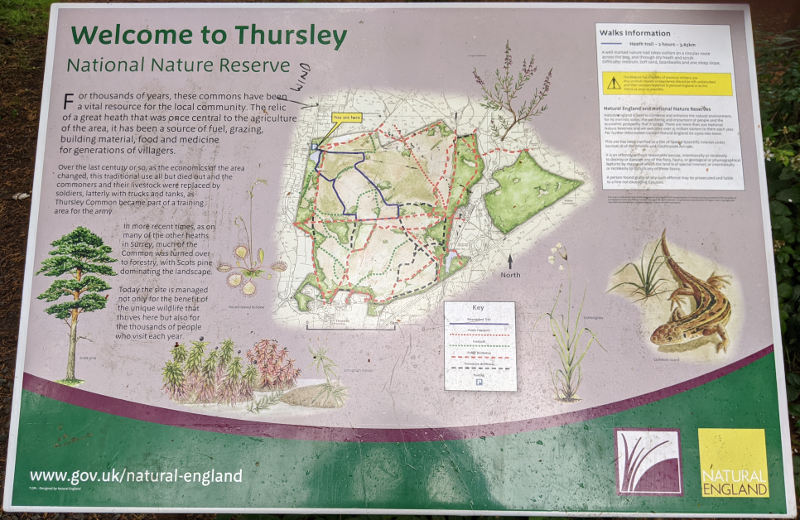
AB1 note: Incidentally, I think the map on that panel isn't on a website. The only place I've found it is in the Natural England PDF. Given the lack of detail on the OS maps of the same area, I'd strongly recommend having a photo of it with you.
AB1 heads out to orientate himself and spots lots of Swallows disobeying social distancing requirements. AB2 is collected from the car and we head out to see which daytime species we can spot before returning to the car for a picnic and heading out again to try for some dusk/night species. We're hoping for Dartford Warbler, Common Redstart and Nightjar. Recalling a previous trip to Richmond Park with promises of Dartford Warbler, AB2 is dubious about their existence...
On entry to the reserve, it's clear the damage is extensive. It seems little of the boardwalk remains or at least precious little to make it possible to follow it anywhere; big angry signs warn us not to even think of trying it, and we obey. The Dragonfly sculpture can easily be picked out in the distance, with no heath or trees between us and it.
We survey the scorching from Shrike Hill and hear the unmistakable churring of a Nightjar; this prompts a degree of consternation on its behalf. Who dares disturb it at such an early hour?
This first lap of the reserve produces conspicuous-looking and sounding Stonechat. The first time this happens the Stonechat is accompanied by a Dartford Warbler friend - reader, they exist! We're delighted the Stonechat's chirping alerted us to the presence of its Dartford Warbler friend.

Stop taking photos of that Stonechat and look at the Dartford at the bottom!
This happens on two more occasions as we work our way round the reserve, we cannot believe our luck (not luck, science! --Ed). We are less lucky when it comes to Redstart and don't see any in the places we'd hoped to see them. AB1 blames the lack of sunshine.
The common is quiet, but not empty and we meet (at a distance) some cyclists, runners and dog walkers on our circuit round the reserve. We take a wrong turn somewhere and end up going a little further than planned and although the second part of the route is somewhat devoid of birds, we wend our way back to the car via the non-socially distant Swallows, before settling down for a bite to eat.
AB1 has had success seeing Nightjar on Thursley Common before and so has a plan up his sleeve about where to see one. We get to the appointed spot a little earlier than planned and spend a little time checking out branches that look to be at an appropriate angle to house a Nightjar. Nothing.
We decide to trot back to another area of trees with the hope of catching sight of a Nightjar waking up and to warm ourselves up. We get a glimpse of female Redstart and another Dartford Warbler silently hopping from perch to perch , before deciding to head back to our Nightjar lookout point.
We're there for about 9pm and, as far as the eye can see, seem to be the only people on the Common. And then we wait. Not a lot happens.
Then suddenly, churring! The noise is coming from a tree we specifically surveyed earlier on - how could we have missed it? It felt like we had covered every inch of the tree with our binoculars when we looked earlier on.
Our first xeno-canto contribution, right there.
AB1 refers to xeno-canto and we deduce the unearthly sound was the flight call. The light is fading now, of course, but we can still see the Nightjar flying about the tree in loops, returning to a couple of visible perch points. Wow.
And then, wing slapping! Unreal. And then, it flies straight for us! It feels as if the bird could have brushed us on the head with its wings. Whoa . Then there are two of them, calling to each other. A pair, surely?
Another noise: “there”, says AB2, pointing to the sky, and we follow a pair of birds with our binoculars. “Woodcock”, declares AB1. "Didn't know they made that noise, huh". A life-tick, it turned out.
One of the Nightjar is back on one of the trees we originally found it on and it is churring again. AB2 attempts a video and the Nightjar does another fly-by, briefly obscured by the back of AB1's head. It's exhilarating how close the Nightjar gets. Two more Woodcock fly over, victoriously.
With the light continuing to fade and replete with sightings, we decide to call it a day and pick our way back to the car. What an experience - 10/10 day.